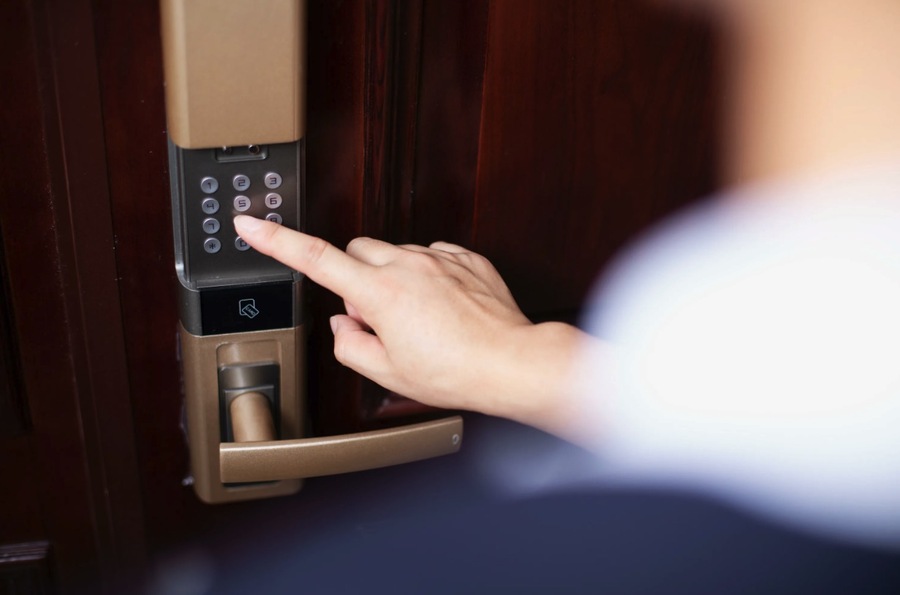In today’s world, where information is power, the security of legal and financial documents is paramount. Protecting these documents from unauthorized access, theft, and environmental damage is crucial for individuals and businesses alike. According to a 2023 report by the National Association for Information Destruction (NAID), 60% of small businesses that experience a data breach are out of business within six months. A safe for documents play a vital role in ensuring that sensitive information remains secure. These sturdy containers are designed to provide a high level of protection, making them an essential investment for safeguarding critical documents.
Legal and financial papers often contain sensitive information that, if compromised, could lead to severe financial loss, identity theft, and legal complications. A 2022 survey by the Ponemon Institute found that the average cost of a data breach is AED 15 million. Protecting these documents is not just about preventing theft but also about ensuring that they remain intact and accessible in the event of disasters such as fires or floods.
Why Crucial Documents Need Extra Protection?
Types of Documents
Several key documents require extra protection due to their importance and sensitivity:
Contracts and Agreements: Legal binding documents that outline terms and conditions between parties.
Wills and Deeds: Documents that determine the ownership of property and the distribution of assets after death.
Financial Records: Includes bank statements, investment records, and other financial documents.
Tax Documents: Important for both personal and business taxation purposes.
Intellectual Property Documents: Patents, trademarks, and copyrights.
Risks of Unprotected Papers
Unprotected documents are vulnerable to a range of risks:
Theft: Sensitive information can be stolen and misused. According to the FBI, property crimes, including theft, resulted in losses of over AED 58.32 billion in 2021.
Fire: Paper documents can be easily destroyed in a fire. The National Fire Protection Association (NFPA) reports that fires cause AED 38.93 billion in property damage annually.
Water Damage: Floods or leaks can ruin important papers. Water damage claims are among the most common and costly insurance claims, with an average cost of AED 40.35 per incident, according to the Insurance Information Institute (III).
Unauthorized Access: Without proper protection, documents can be accessed and tampered with by unauthorized individuals. The 2022 Identity Theft Resource Center (ITRC) report states that 50% of identity theft cases involve the misuse of existing account information, often sourced from unprotected documents.

Features of Effective Safes
Fireproof and Waterproof Properties
A key feature of a reliable, safe box is its capacity to resist environmental hazards. Fireproof and waterproof safes are designed to keep documents intact, even during fires or floods. These safes are often rated according to the duration and level of protection they provide, such as UL 72 Class 350 1-hour for fire resistance.
Durability and Build Quality
The construction of the safe box should be robust enough to deter tampering and burglary. High-quality materials and reinforced designs make it difficult for intruders to break into the safe. The Bureau of Justice Statistics (BJS) notes that 27.6% of burglaries result in property loss or damage, highlighting the need for durable safes.
Locking Mechanisms
Safe boxes come with various types of locks, each offering different levels of security:
Biometric Locks: Use fingerprints or other biometric data to grant access, ensuring that only authorized individuals can open the safe. Market research indicates that the biometric lock market is expected to grow at a CAGR of 19.3% from 2022 to 2028.
Digital Locks: Require a PIN code, offering a high level of security and convenience. Digital locks are preferred by 45% of businesses for their ease of use and reliability.
Combination Locks: Use a sequence of numbers to unlock, providing a reliable security option.
Key Locks: Simple and effective, but can be less secure if keys are lost or duplicated.
Size and Storage Capacity
The size and storage capacity of a safe box should be chosen based on the volume and types of documents to be protected. A larger safe may be needed for businesses with extensive records, while a smaller one might suffice for personal use. The average household safe has a capacity of 0.5 to 2 cubic feet, whereas commercial safes can exceed 10 cubic feet.
Accessibility
Balancing security with ease of access is crucial. Safe boxes should be easy to open by authorized users but challenging for unauthorized individuals. Features like interior lighting and adjustable shelving can enhance usability.
Regulatory Compliance and Legal Standards
Various laws and regulations govern the storage and protection of sensitive documents, such as
General Data Protection Regulation (GDPR): Requires the secure storage of personal data.
Health Insurance Portability and Accountability Act (HIPAA): Mandates the protection of health information.
Safe Boxes and Compliance
Using safe boxes can help meet these regulatory requirements by ensuring that documents are stored securely and protected from unauthorized access and environmental threats.
Best Practices for Using Safe Boxes for Documents
Organization Tips
Efficiently categorizing and storing documents within a safe box can save time and ensure quick access when needed. Use labeled folders and dividers to organize documents by type or date.
Maintenance and Regular Checks
Regularly checking the condition of the safe box and its locking mechanisms ensures that it continues to provide adequate protection. Periodic maintenance can help identify and address any issues before they compromise security.
Access Control
Managing who has access to the safe box is critical. Keep an access log and ensure that only authorized personnel can open the safe. Regularly update access permissions as needed.

Choosing the Right Safe Locker for Documents
Assessment of Needs
Review the types of documents you need to secure, the quantity of records, and how often you need to access them. This evaluation will guide you in selecting the right size and features for your safe box.
Comparison of Safe Box Types
Consider the pros and cons of different types of safe boxes:
Fireproof vs. Burglar-Resistant: Fireproof safes offer protection against fires, while burglar-resistant safes provide security against theft. Some safes offer both features.
Portable vs. Fixed: Portable safes are easy to move, while fixed safes offer higher security due to being anchored in place.
Budget Considerations
While it’s essential to balance cost with the level of protection needed, investing in a high-quality safe box can save money in the long run by preventing potential losses due to theft or damage. On average, a high-quality safe can range from AED 700 to AED 5000, depending on features and capacity.
Future Trends in Document Security
Technological Advancements
Emerging technologies in safe box design, such as smart safes with IoT integration, offer enhanced security features like remote monitoring and alerts. The smart safe market is projected to grow at a CAGR of 12% from 2023 to 2030.
Digital and Physical Hybrid Solutions
Combining digital backups with physical document protection ensures that important information is always accessible, even if one form of storage fails. A 2023 survey revealed that 67% of businesses are now using a hybrid approach to document security.
Sustainable Practices
As environmental concerns grow, manufacturers are developing eco-friendly safe boxes made from sustainable materials and using energy-efficient production methods. This trend is expected to drive a 15% increase in demand for green safes by 2025.
Conclusion
Utilizing a safe locker is essential for safeguarding legal and financial documents from theft, unauthorized access, and environmental hazards. High-quality, safe boxes are equipped with features such as fireproof and waterproof capabilities, sturdy construction, diverse locking mechanisms, and adequate storage capacity.
Evaluate your current document security measures and consider investing in the right safe boxes to protect your legal and financial documents from all possible risks. By doing so, you can enjoy peace of mind, knowing that your vital information is well-protected.

One of the best modern examples of literary biography, with its artfully chosen detail and narrative arc combining with a close reading of major texts.




